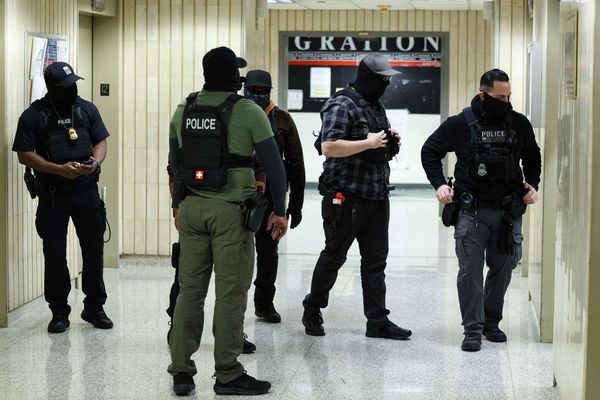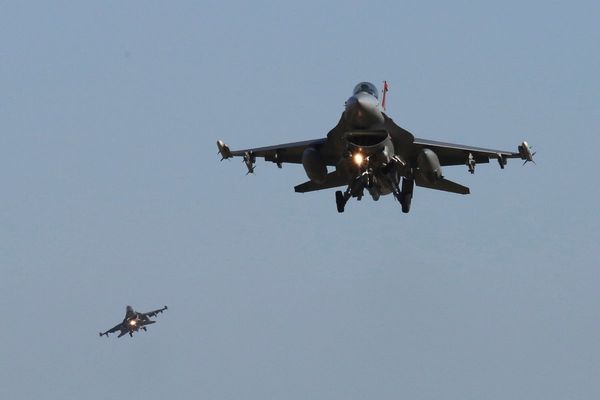Russia has announced it will no longer uphold its obligations under the intermediate-range nuclear forces (INF) treaty, signed by the Soviet Union and the United States in December 1987. The decision has raised questions about the future of nuclear deterrence and the danger of global nuclear proliferation.
The timing of this announcement from the Kremlin must be considered. It was just days after a spat on social media between the US president, Donald Trump, and former Russian president Dymitri Medvedev, a strong ally of Vladimir Putin.
Responding to the US president’s threats to punish Russia for its war in Ukraine, Medvedev took to X on July 28 to warn Trump that: “Each new ultimatum is a threat and a step towards war. Not between Russia and Ukraine, but with his own country.” Medvedev added: “Don’t go down the Sleepy Joe road!”
Trump responded by announcing that the US would redeploy two of its nuclear submarines into closer striking distance with Russia.
Russia’s decision also comes just three days before the deadline of August 8 set by Trump for Russia to agree to a ceasefire in its war with Ukraine.
It’s also important to remember that, while the Russian withdrawal from the INF treaty is attracting attention now, the US withdrew from the same treaty in August 2019, during Trump’s first presidency. So it’s tempting to see all this as diplomatic posturing.
However, when it comes to nuclear weapons – and given the rising global tensions – such moves must be taken seriously.
Arms limitation treaties
The INF treaty was part of a series of agreements between the US and Soviet Union that began with the Strategic Arms Limitation Talks (Salt) of 1972 and 1979. These led to agreements to reduce the strategic weapons held by both sides, including intercontinental ballistic missiles, submarine-launched ballistic missiles and ballistic missile defences.
This was then followed in 1987 by the INF treaty, which was struck between Ronald Reagan and Mikhail Gorbachev. Both sides agreed to reduce their stockpile of ground-based ballistic and cruise missiles with a range of between 500km to 5,500km (an entire category of nuclear weapon).
They also put in place provisions for inspection to ensure both were keeping to the agreement. Thanks to the treaty, 2,692 missiles were eliminated.
Despite these agreements, there remain significant stockpiles of nuclear weapons, with Russia and the US the most heavily armed nuclear powers. The size of their stockpiles is difficult to assess with complete accuracy, but the latest estimate by the non-profit Arms Control Association is that Russia is the most heavily armed nuclear power with 5,580 warheads, while the US maintains 5,225.
Both powers operate what is known as the “nuclear triad” of air, land and sea-launched systems. Russia’s decision to withdraw from the INF treaty only concerns ground-based missile systems, which in 1987 had the capability of striking targets in Europe withing a short period of time. Air- or sea-launched nuclear weapons were not seen at the time as a major concern to European security so were not covered by the treaty.
The other remaining non-proliferation treaty, New Start, which limits the US and Russia’s total number of deployed strategic missiles, warheads and launchers, does cover air and sea-launched weapons. However, its future is also in doubt.
Russia claims to still abide by the central limits of the agreement, despite having suspended official participation in February 2023. But the deal is due to expire in February 2026 and there are real concerns whether it will be possible for new negotiations to take place given the Russo-Ukrainian War and the current state of relations between Washington and Moscow.
There is also currently no treaty that covers the amount of tactical nuclear weapons a nation can hold. These are designed to be used on the battlefield (rather than against long-range targets) and, as they have never been deployed, it is not clear what damage they could do to a nation’s own forces as well as the enemy. This raises interesting questions with regards to the proximity of Nato members to Ukraine and Russia.
Defence systems
In May 2025, Trump announced a funding package of US$175 billion (£131 billion) for the development of a new “Golden Dome” defensive system that he said would render Russian strategic nuclear weapons redundant. Critics have pointed out that the US attempted something similar before without success, the Reagan-era “Star Wars” defence system, which ended up being scrapped as too expensive.
Missile defence systems against nuclear weapons do exist, such as the US ground-based midcourse defense system, which aims to track and shoot down incoming nuclear missiles. But these have never actually been tested in operational conditions. So the extent to which they provide guaranteed protection against every nuclear warhead is not known.
Russia’s decision to end compliance with the INF treaty should be viewed by the west with a great deal of concern. But it should also be seen in the context of previous Russian statements about its nuclear arsenal and willingness to use it, as well as the recent changes to the country’s nuclear doctrine to make it easier for Russia to use these weapons.
The Kremlin has made several changes to this doctrine since it started the war in Ukraine, usually to warn Kyiv’s western allies of the potential consequences of supplying more powerful and advanced weapons for use against Russia.
The true power of nuclear weapons in the 21st century is not necessarily their awesome destructive capacity, but the way that awesome destructive capacity can be used by nuclear-armed states to manoeuvre and protect their political power.
Matthew Powell does not work for, consult, own shares in or receive funding from any company or organisation that would benefit from this article, and has disclosed no relevant affiliations beyond their academic appointment.
This article was originally published on The Conversation. Read the original article.







